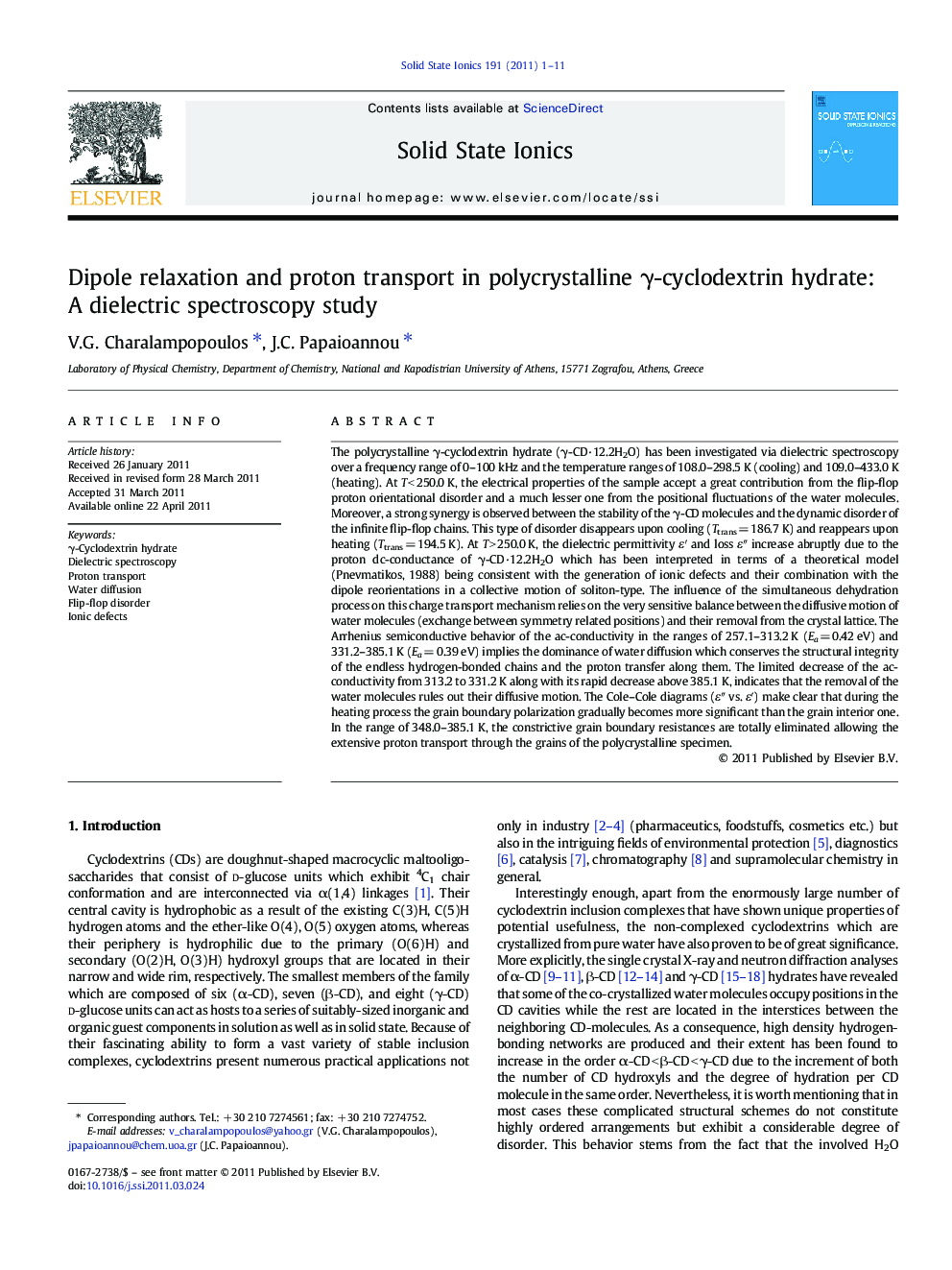| Article ID | Journal | Published Year | Pages | File Type |
|---|---|---|---|---|
| 1297399 | Solid State Ionics | 2011 | 11 Pages |
The polycrystalline γ-cyclodextrin hydrate (γ-CD·12.2H2O) has been investigated via dielectric spectroscopy over a frequency range of 0–100 kHz and the temperature ranges of 108.0–298.5 K (cooling) and 109.0–433.0 K (heating). At T < 250.0 K, the electrical properties of the sample accept a great contribution from the flip-flop proton orientational disorder and a much lesser one from the positional fluctuations of the water molecules. Moreover, a strong synergy is observed between the stability of the γ-CD molecules and the dynamic disorder of the infinite flip-flop chains. This type of disorder disappears upon cooling (Ttrans = 186.7 K) and reappears upon heating (Ttrans = 194.5 K). At T > 250.0 K, the dielectric permittivity ε′ and loss ε″ increase abruptly due to the proton dc-conductance of γ-CD·12.2H2O which has been interpreted in terms of a theoretical model (Pnevmatikos, 1988) being consistent with the generation of ionic defects and their combination with the dipole reorientations in a collective motion of soliton-type. The influence of the simultaneous dehydration process on this charge transport mechanism relies on the very sensitive balance between the diffusive motion of water molecules (exchange between symmetry related positions) and their removal from the crystal lattice. The Arrhenius semiconductive behavior of the ac-conductivity in the ranges of 257.1–313.2 K (Ea = 0.42 eV) and 331.2–385.1 K (Ea = 0.39 eV) implies the dominance of water diffusion which conserves the structural integrity of the endless hydrogen-bonded chains and the proton transfer along them. The limited decrease of the ac-conductivity from 313.2 to 331.2 K along with its rapid decrease above 385.1 K, indicates that the removal of the water molecules rules out their diffusive motion. The Cole–Cole diagrams (ε″ vs. ε′) make clear that during the heating process the grain boundary polarization gradually becomes more significant than the grain interior one. In the range of 348.0–385.1 K, the constrictive grain boundary resistances are totally eliminated allowing the extensive proton transport through the grains of the polycrystalline specimen.
Research Highlights► γ-Cyclodextrin hydrate as model for charge transport in biological structures. ► Combinational mechanism of reoriented protons and ionic defects. ► Sensitive balance between water diffusion and water removal.
